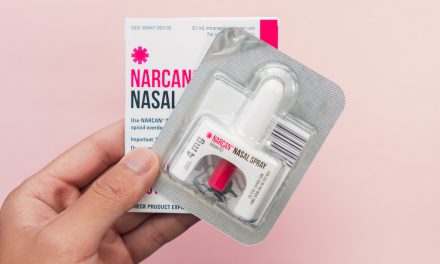Continuing their month-long series on suicide prevention, the Missouri Behavioral Health Council (MBHC) presented, “Zero Suicide in Action” on September 15. The webinar provided an overview of the Zero Suicide initiative in Missouri and the responsibility of health care providers to help prevent suicide in at-risk patients. Zero Suicide is an aspirational goal and top priority of the National Action Alliance for Suicide Prevention. The accompanying trainings and tools provide a framework for systematic suicide prevention in health care systems to fill in existing gaps.
“Patients are at risk for suicide and they’re falling through the cracks,” said Michelle Glowczwskie, MSW, LCSW, beginning the presentation on a somber note. Glowczwskie, director of telehealth home and community services at Behavioral Health Response (BHR), started as a crisis clinician more than 13 years ago and has remained in the field since, dedicated to suicide prevention.
“Suicide prevention is a core responsibility for behavioral health care systems,” Glowczwskie said. “People at risk for suicide are being seen in health care settings but often there’s no intervention for those risks. Comprehensive approaches to suicide care are needed in health care settings because many people who are receiving health care are dying by suicide.”
According to Glowczwskie, in the year before their death by suicide, 83% of people saw a physical health care provider while only 29% saw a mental health professional. In a month before their suicide, nearly half saw a general provider and 30% saw a mental health professional. In the week before their death by suicide, 38% of patients saw a health care provider.
While evidence-based suicide prevention care has developed tremendously in the last 5-10 years, many trainings and approaches are still not being used. The goal of Zero Suicide is to identify people at risk and effectively intervene and engage them in collaborative, supportive, long-term treatment to prevent suicide. Zero Suicide is not a treatment in and of itself, but a continuous quality improvement (CQI) and a dedication to intentionally creating a cultural mindset of, “We can do better.”
A Zero Suicide Institute survey identified two main problems among clinicians contributing to the gaps in suicide prevention: 39% of clinicians reported they don’t have the skills to engage and assist at-risk patients, and 44% reported they don’t have the training.
According to Glowczwskie, providers often don’t begin the conversation because they believe that patients will bring up if they’re feeling suicidal. “But that’s not usually what happens,” she said. “The use of these Zero Suicide approaches should be expected, if not mandated, by people struggling with suicide, their families, and the people treating them.”
Accomplishing Zero Suicide
Zero Suicide focuses on safety and error reduction. Providers are taught to implement screenings, assessments, and risk formulation from the patient’s first visit throughout ongoing aftercare. “Zero Suicide is going to close the gaps,” Glowczwskie said. “It takes a comprehensive approach, and its seven elements are crucial to improving care and saving lives.”
The seven elements to accomplishing Zero Suicide are:
- Lead through commitment, policy, and culture.
- Train a competent, confident, and caring workforce.
- Identify by continually screening for risks.
- Engage patients in collaborative care.
- Treat suicidal thoughts directly.
- Transition effectively to long-term aftercare and recovery.
- Improve training by collecting data, reviewing quality, and making adjustments.
Zero Suicide is driven by lived experience, with suicide attempt survivors in leadership, training, and planning roles. The result is suicide intervention training that continually improves upon itself as more data, and experiences, are collected.
The collaborative approach to treatment allows patients to drive their care with support each step of the way. Providers are taught to identify and explain risk factors as well as the importance of treatment. When risks are present, measures may be taken to reduce likelihood of harm, such as removing or restricting access to lethal means. If an appointment is missed, it is the facility’s responsibility to immediately follow up.
“Suicide care is not just the clinical staff’s responsibility,” Glowczwskie said. “Everyone in the organization must embrace suicide care as part of their core responsibility and mission. Staff dedication is critical. Leaving a voicemail or sending an email is not enough to engage and protect those who are at risk.”
Most importantly, Zero Suicide aims to reduce emergency visits and improve long-term care. While crises occur and short-term hospital stays may be necessary, ongoing support and identification of risks is critical to suicide prevention. Hospitals and emergency rooms should not be the only option for someone who is suicidal, especially if their providers have previously failed to directly address concerns or behaviors.
“Short-term actions to keep people safe in the hospital are not a substitute for ongoing care and treatment,” Glowczwskie said. That short-term stay in a hospital is not going to get rid of the triggers of their suicidal thoughts or the issues that are going on with their life. It’s what happens after the hospital and engaging them in treatment that are the most important steps in care.”
Zero Suicide in Missouri
The Zero Suicide National Collaborative is an ongoing advancement of the 2012 National Strategy for Suicide Prevention: Goals and Objectives; 8 & 9, through the implementation of the Zero Suicide Approach. A Breakthrough Series from December 2014 through September 2015 identified which state-level actions support implementation of suicide care throughout Missouri, leading to the development of the Missouri Zero Suicide Team Strategy.
The purpose of the strategy team, ongoing since January 2015, is to implement Zero Suicide across the state. Currently, every single community mental health center has participated in Zero Suicide Academy, along with most state substance use treatment agencies and Missouri hospitals. The Missouri Department of Mental Healt (DMH), Missouri Council on Behavioral Health, and Missouri Suicide Prevention Network have been working to expand Zero Suicide to every level of the health care system.
BHR joined DMH’s Zero Suicide Collaborative in 2015, working with DMH and Compass to develop and launch the initiative for statewide Zero Suicide. Two SAMSHA grants helped implement Zero Suicide across Missouri: a Zero Suicide grant awarded to BHR and ReDiscover, and a COVID grant awarded to BHR and Compass.
BHR partnered with Mercy in fall 2018 to utilize the Zero Suicide grant and again in August 2019 to utilize the COVID grant. BHR replicated the workflow between the two grants, working on inpatient floors and using the CAMS model as an intervention tool.
Zero Suicide is Possible
Physical and behavioral health care organizations – including the MO DMH, BHR, and Mercy – have found that Zero Suicide is feasible without additional funding and is successful at saving lives. Data comparing baseline ER visits for suicidal attempts and ideations compared to 3 months post-training shows the connection between improved treatment approaches and suicide reduction.
“Patient safety and suicide care have to be a priority,” Glowczwskie said. “We should strive for nothing less than zero suicide for those coming to us for help.”
Zero Suicide is supported by the Suicide Prevention Resource Center and houses all of their training information and tools on their website, https://zerosuicide.edc.org/.
To learn more about Zero Suicide implementation across Missouri, watch the recorded webinar, “Zero Suicide in Action” from the September Suicide Prevention Webinar Series.
Read part one of the Suicide Prevention Series.
Read part two of the Suicide Prevention Series.
Read part four of the Suicide Prevention Series.








